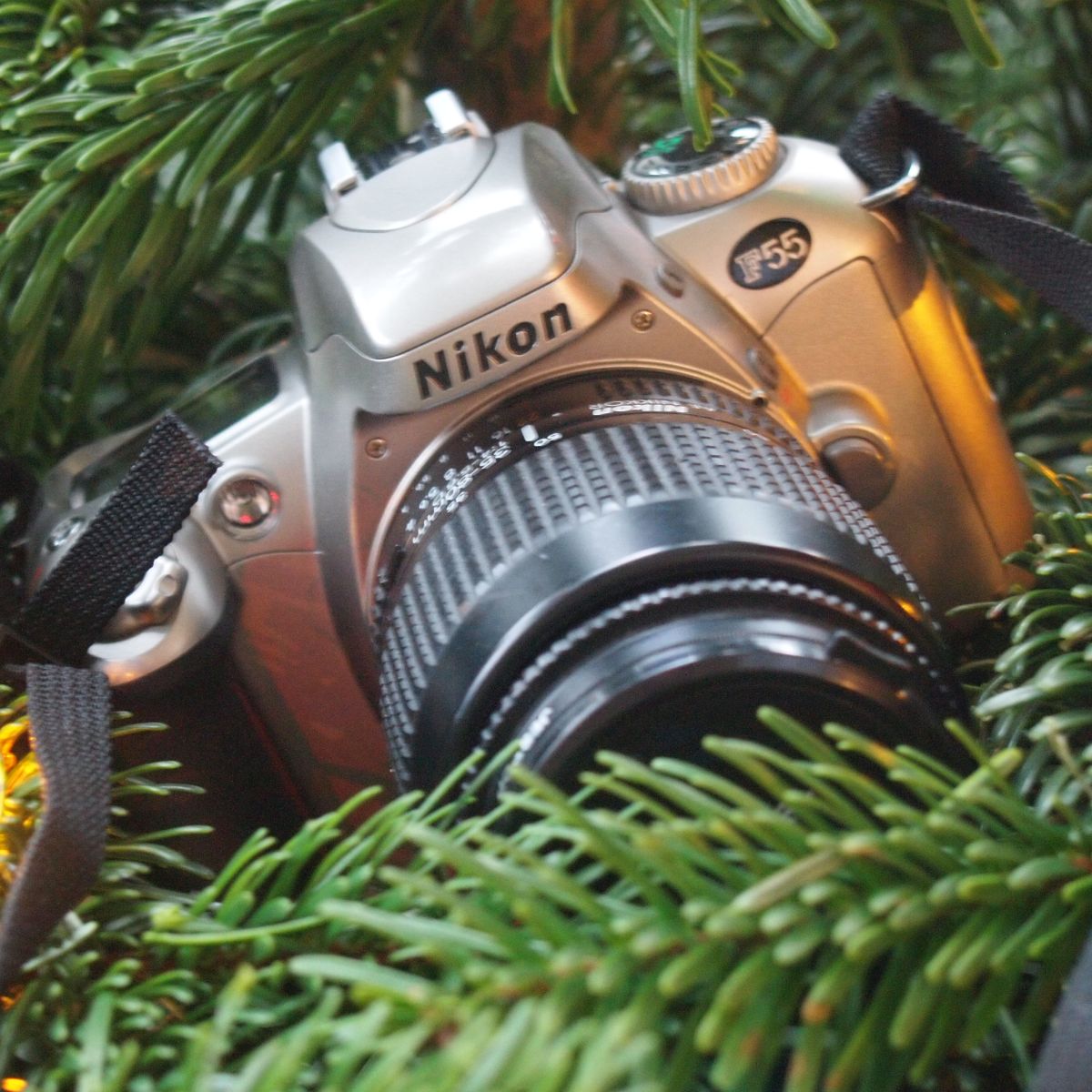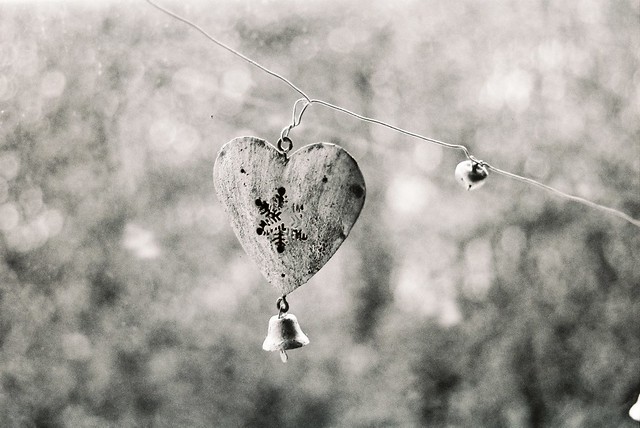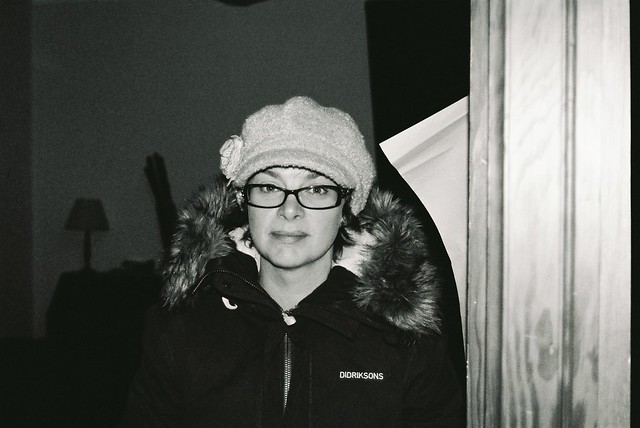I’d effectively stopped looking for Poundland cameras (any that I could buy a quid or less) some time ago but this camera body came up as a you might like too when browsing eBay.

So welcome to Our 20th Poundland Camera and the last for 2015 – a Nikon F55 SLR body.
I came close with the Nikon F-401 a 80’s predcessor but this 2002 camera made it under the line (without lens). The F55 (N55 in US) looks and feels like an entry level dSLR at first glance – it is scarily similar to my d50 launched just a few years later in layout missing only the rear preview LCD & controls. The unit is controlled in the main part by selecting an exposure mode via the main top plate dial, with user settings largely being controlled by a command dial just behind the main LCD panel on the top housing. This shows user setting information as well as shot number and shutter/aperture in the auto modes. Most of what it shows is also visible in the viewfinder in a view familiar to any dSLR user.

Nikon F55/N55 Specs
- Focus: 3 zone Active AF
- Metering: 5 segment matrix
- EV Range (100 ISO): 1-20
- Shutter: electronic controlled Vertical focal plane
- Shutter Speeds: 30 sec to 1/2000 in 1/2 steps
- EV: Compensation: +/- 2 in 1/3 steps
- Flash sync: 1/90
- Built in TTL Flash GN: 12m/40ft at 100 ISO
- DX coding: 25-5000
- Batteries: 2 x CR2 3v Lithium Batteries
There is no denying the body has some limitations compared to the high-end models of its time but just like it’s predecessor the F-401 arguable the first entry-level AF SLR from Nikon, a lot of the underlying systems are the same as the high-end models. It shares the 5 segment matrix metering seen in high-end models and whilst it has just 3 AF focus zones the camera comes with Nikon’s Lock on technology for maintaining focus on a moving target and you can switch between zones in single zone focusing. The camera also feature diopter correction which is missing on some higher models of the time.

For simple shot taking the camera does pretty well with this. It has a choice of 10 exposure modes which will again be familiar to dSLR users. The main one being auto where all you need do is point and shoot and the camera does everything else. There are the 4 classic PSAM modes (Programme-like auto but more user control, Shutter priority, Aperture priority and Manual (with metering) and 5 scene modes for portrait, landscape, sports continuous, night portrait and macro. Other buttons allow switching of settings and control of the flash, EV compensation (+/-2), multiple exposure, timer and early rewind.You can also disable AF and set for auto bracketing of 3 shots. So most bases for the beginner are covered. The camera is easy to load and auto DX codes. Interestingly when loading it actually winds all the film out and then rewinds into the cassette in use meaning if the cover is opened by mistake most of your shots are already in the can.

Shotwise in that fashion it does deliver. AF is reasonable quick and quieter than 80’s-early 90’s AF Nikons. The matrix metering works well enough. The body is light and small but feels robust. I wouldn’t use it with a big zoom however both for balance and the risk to the mount plate (see below). It also comes in transient early noughties trend for silver cameras so it can look a bit tourist and certainly doesn’t look very pro.

There are sacrifices to keep the cost down. Some are to be expected – lack of depth of field preview, no manual alteration of film speed (you can use EV to adjust) and no cable release (despite some being sold as compatible, there is no menu option for IR remote nor does the manual reference it). There is also no exposure or focus lock.
The bigger issues relate to lenses and mounting them. Like the F-401 the camera was aimed at entry-level folk who had no or few lens and oddly offers the same support as it’s 1980’s predecessor. It will mount almost any AI Nikon lens but the support varies. It was intended to be used with Screw type Nikon AF lens and you only get full operation with AF-D and G class lenses (in fact it was sold with G class lens as a kit). Use a AF-S lens and you’ll need to focus manually. The manual has a good guide as does Ken Rockwell but I note whilst Ken infers that DX lens may work to some extent, my own experience was that my d50 lens was a complete fail. Manual focus AI lens can be used-some with focus assist support but not all and metering is limited or non existent. So if you have a lot of Nikon glass you might want to spend a few quid more on a more able camera F75.
The mount however may be more of an issue. If you were horrified by Nikon’s that moved away from brass plated to steel mounts look away now as the f55 mount is plastic !!!
This was never intended for the professional studio and as so has yet more issues. Whilst it has a nice typical built-in TTL flash, it can’t TTL any external flash units (even the F-401 could do this)
So perhaps not the choice for a season portrait shooter with a pile of Nikon Lenses nor the model to go for if you have a full frame Nikon dSLR and want to use your lenses on a film body (in fairness most high-end dSLR will take AF-D and G lenses – most entry levels don’t these days). Beyond the lens and mount issues though a reasonable basic body.
I’m not alone in getting the body for 99p and certainly most sell for under a tenner. Mines had some wear signs but was otherwise intact – worth getting one with a bodycap as implies store correctly. Scarily it will probably cost you more for the batteries than the body. One with a lens will be more expensive – perversely you can often by the body and lens for less that you pay for the lens alone. Recent eBay sales of body with lens (usually with a kit G lens) start around £20 but usually sit between £35-60 for a single lens. The F65 & 75 offer more support for lens though. New enough so light seals should be fine but I do worry about the mount (more so as my G class lens went kaput in testing this as it’s plastic mount snapped – not the camera’s fault as I probably knackered it in a cheap adaptor mount for a micro 4/3 camera but an ominous sign.
Why buy
- Cheap way into Nikon Glass
- Does most beginner tasks well
- Good exposure metering
- Lightweight but robust
- diopter correction
Why not
- Tourist silver only
- Plastic lens mount
- Lens support limited
- Limited pro features like TTL for external flash
What I paid & got
- 99p +£2.60 P&P on ebay
- Came with bodycap and working batteries
Alternatives
- Nikon F65/F75 – models up add more lens support for little more
Helpful links
- Nikon F55 page at Camera-wiki.org
- Nikon N55 (F55) manual at Mike Butkus’s site
- Nikon F55 review on Ken Rockwell’s site
- Nikon F55 specs on Nikon’s official site
- Nikon F55 Review on Lewis Collard’s site

Hey, thanks for the link. And thanks for an entertaining review! Even though I feel like I overpaid when I got mine for £7 all those years ago 😀